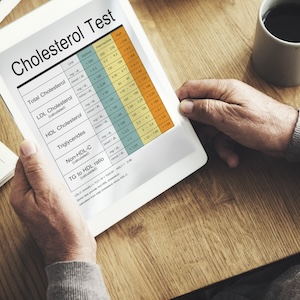Management and clinical outcomes of patients with homozygous familial hypercholesteremia in Saudi Arabia

Submitted: December 5, 2022
Accepted: December 26, 2022
Published: February 2, 2023
Accepted: December 26, 2022
Abstract Views: 2090
PDF: 491
Publisher's note
All claims expressed in this article are solely those of the authors and do not necessarily represent those of their affiliated organizations, or those of the publisher, the editors and the reviewers. Any product that may be evaluated in this article or claim that may be made by its manufacturer is not guaranteed or endorsed by the publisher.
All claims expressed in this article are solely those of the authors and do not necessarily represent those of their affiliated organizations, or those of the publisher, the editors and the reviewers. Any product that may be evaluated in this article or claim that may be made by its manufacturer is not guaranteed or endorsed by the publisher.
Similar Articles
- Niccolò Marchionni, Francesco Orso, Cholesterol: until which age 'the lower the better'? , Monaldi Archives for Chest Disease: Vol. 84 No. 1-2 (2015): Cardiac series
- Eugenio Laurenzano, Lucrezia Spadera, Mario De Laurentis, Gregorio Brevetti, Impairment of microcirculation and energy metabolism in intermittent claudication: beneficial effects of exercise training , Monaldi Archives for Chest Disease: Vol. 72 No. 3 (2009): Cardiac series
- Sabino Scardi, Ethnicity, cardiovascular diseases and italian cardiology in an evolving society , Monaldi Archives for Chest Disease: Vol. 72 No. 3 (2009): Cardiac series
- Giuseppe Caramia, Romualdo Belardinelli, Hyperhomocysteinemia in developing age and nutritional aspects of folates: an early cardiovascular risk factor , Monaldi Archives for Chest Disease: Vol. 66 No. 4 (2006): Cardiac series
- Gianfranco Beghi, Antonio De Tanti, Paolo Serafini, Chiara Bertolino, Antonietta Celentano, Graziella Taormina, Monitoring of hospital acquired pneumonia in patients with severe brain injury on first access to intensive neurological rehabilitation: First year of observation , Monaldi Archives for Chest Disease: Vol. 88 No. 1 (2018)
- Iacopo Muraca, Francesca Ciatti, Angela Migliorini, Niccolò Marchionni, Renato Valenti, Antithrombotic therapy in acute coronary syndrome: undertreatment of elderly? , Monaldi Archives for Chest Disease: Vol. 90 No. 4 (2020)
- Maria Tamara Neves Pereira, Mariana Tinoco, Margarida Castro, Luísa Pinheiro, Filipa Cardoso, Lucy Calvo, Sílvia Ribeiro, Vitor Monteiro, Victor Sanfins, António Lourenço, Assessing cardiac resynchronization therapy response in heart failure patients: a comparative analysis of efficacy and outcomes between transvenous and epicardial leads , Monaldi Archives for Chest Disease: Early Access
- Mariantonietta D'Agostino, Francesco Giallauria, Caterina Montuori, Francesca Farina, Luigi Maresca, Maria Mancini, Giorgio Torella, Domenico Del Forno, Sara Aurino, Carmine Chieffo, Carlo Vigorito, Takotsubo syndrome in a young woman during puerperium: case report , Monaldi Archives for Chest Disease: Vol. 76 No. 2 (2011): Cardiac series
- Pompilio Faggiano, Francesco Fattirolli, Anna Frisinghelli, Lucrezia Piccioli, Nicolò Dasseni, Maria Vittoria Silverii, Laura Albricci, Giuseppe D'Ambrosio, Rosaria Garrì, Luigi Esposito, Francesco Giallauria, Secondary prevention advices after cardiovascular index event: From drug prescription to risk factors control in real world practice , Monaldi Archives for Chest Disease: Vol. 89 No. 2 (2019)
- Paolo Ruggeri, Federica Lo Bello, Francesco Nucera, Michele Gaeta, Francesco Monaco, Gaetano Caramori, Giuseppe Girbino, Hereditary hyperhomocysteinemia associated with nephrotic syndrome complicated by artery thrombosis and chronic thromboembolic pulmonary hypertension: A case report , Monaldi Archives for Chest Disease: Vol. 87 No. 3 (2017)
<< < 5 6 7 8 9 10 11 12 13 14 > >>
You may also start an advanced similarity search for this article.

 https://doi.org/10.4081/monaldi.2023.2503
https://doi.org/10.4081/monaldi.2023.2503





